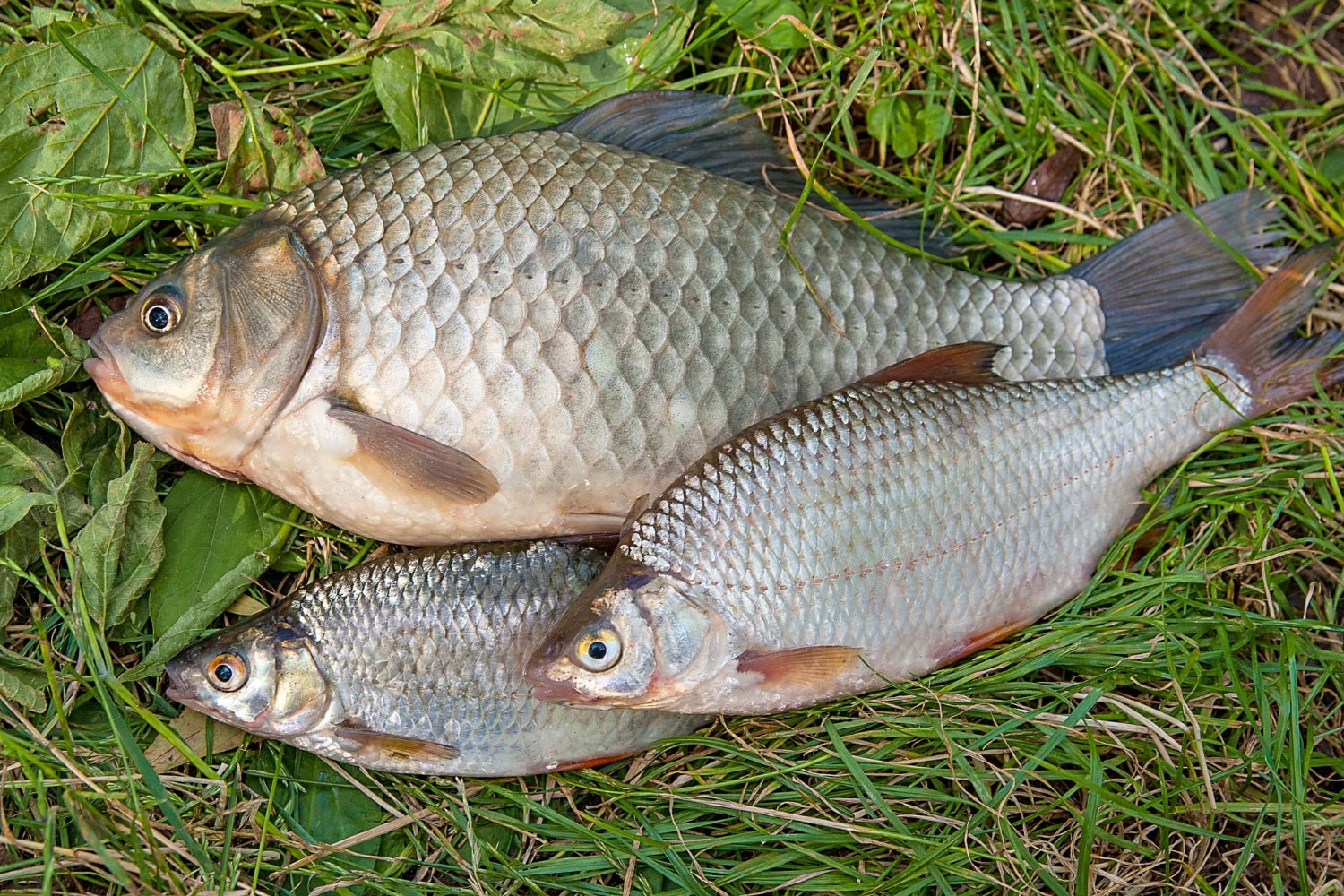The crucian carp is one of the most recognizable freshwater fish, known to experienced anglers and nature enthusiasts alike. This hardy and undemanding species can survive in a wide variety of conditions—from clean lakes to muddy, stagnant ponds. Crucian carp fascinate scientists with their incredible adaptability and unique biological features. Below are some fascinating and educational facts about this remarkable fish that you may not have known.
- Crucian carp can survive in water with extremely low oxygen levels, making them one of the most resilient fish in the world. They can thrive in swampy, almost oxygen-free environments where other species perish. There are even cases where they have survived winters in ponds that were completely frozen over.
- There are two main types of crucian carp: the golden crucian and the silver crucian. The golden variety has a distinctive copper hue, while the silver crucian is lighter and more widespread. Both species adapt well to various environmental conditions.
- Crucian carp are capable of surviving without oxygen for long periods by switching to anaerobic respiration, a process similar to fermentation. In winter, when ponds are covered with ice and oxygen becomes scarce, they rely on this metabolic adjustment. This rare ability allows them to endure extreme environmental stress.
- Some populations of silver crucian carp consist entirely of females that reproduce without males. This process, known as gynogenesis, involves eggs being activated by sperm from another species, though no genetic material from the male is used. Such reproduction is highly unusual in the animal kingdom.
- Crucian carp are omnivorous, feeding on aquatic plants, insect larvae, mollusks, and plankton. Their diet changes depending on the season, their age, and environmental factors. This flexibility helps them survive even in nutrient-poor waters.
- Under favorable conditions, crucian carp can grow to more than 30 centimeters in length and reach weights of up to one kilogram. In harsher environments, their growth is slower, and they remain small. This trait shows how well they adjust to their surroundings.
- These fish typically live for 10 to 12 years, with some individuals documented to live over 15 years. Their lifespan depends on water quality, food availability, and the presence of predators. In isolated ponds, crucian carp often dominate and can live longer than usual.
- In many cultures, crucian carp symbolize resilience and calmness. In China, the fish represents prosperity and is often featured in artwork and festive decorations. In Slavic folklore, crucian carp appear in proverbs and folk stories.
- Crucian carp play a significant role in aquaculture and fish farming across many countries. They are raised for human consumption as well as feed for predatory fish. Because they are easy to manage, they are a profitable choice for small-scale fisheries.
- For beginner anglers, crucian carp are an ideal target due to their abundance and ease of capture using basic fishing gear. Their behavior is predictable in warmer months, making them accessible even to novices. However, larger specimens can be cautious and require more skill to catch.
- Crucian carp tolerate wide temperature fluctuations and can inhabit both cold and warm regions. They can survive in water temperatures ranging from just above freezing to over 30°C. As a result, their range extends from Western Europe to the Far East.
- In overpopulated ponds, a phenomenon known as stunted growth may occur. This happens when limited food availability causes the fish to remain small and grow slowly. This is considered undesirable in fish farming and may require population control.
- Crucian carp have a well-developed lateral line organ, which allows them to detect water vibrations and avoid predators. This sense also helps them navigate in dark or murky waters and locate food efficiently. It is a crucial tool for survival in challenging environments.
- Although they resemble carp, crucian carp belong to a different genus and are not closely related. The similarity in appearance is due to similar ecological niches rather than genetic ties. Crucian carp stand out due to unique biological traits such as oxygen-free survival and gynogenesis.
The crucian carp is more than just a common pond fish—it is a marvel of nature’s adaptability and resilience. These interesting facts highlight its biological ingenuity and evolutionary success. You may not have known that crucian carp can live without oxygen, reproduce without males, and thrive in extreme conditions. This quiet, unassuming fish is truly one of the freshwater world’s most remarkable survivors.





